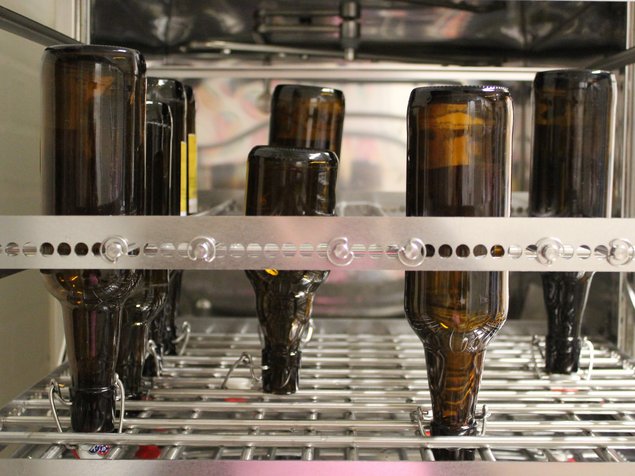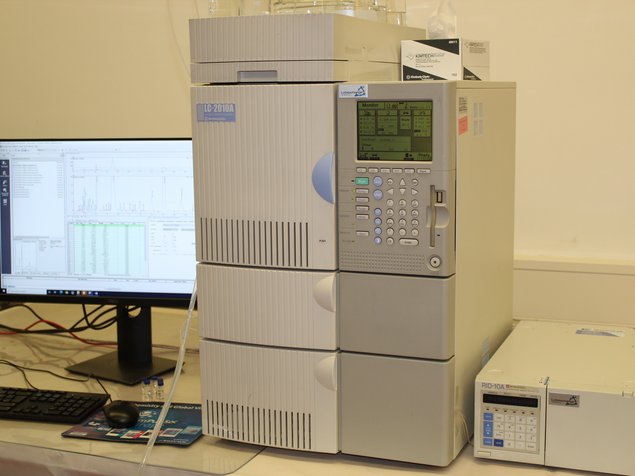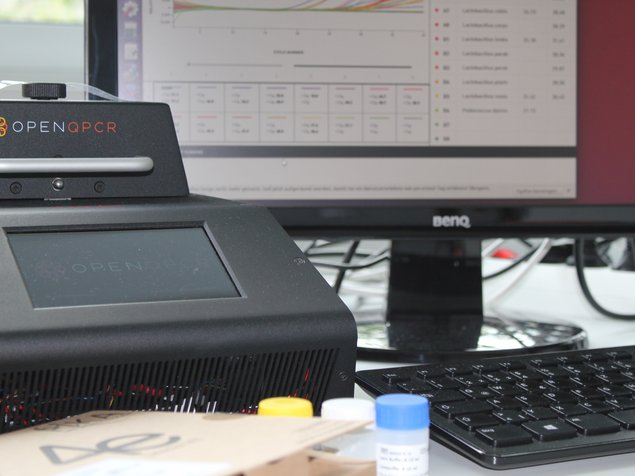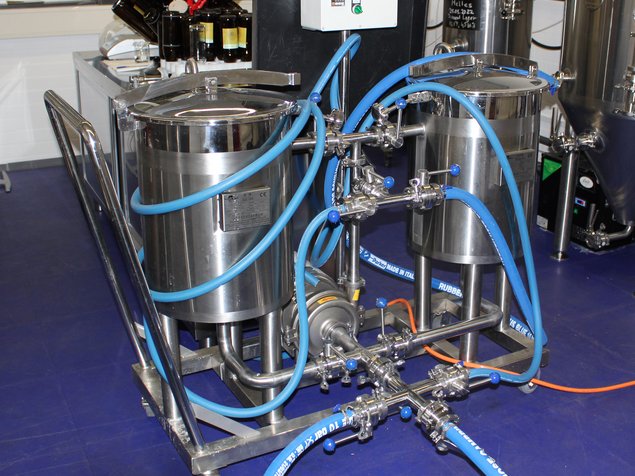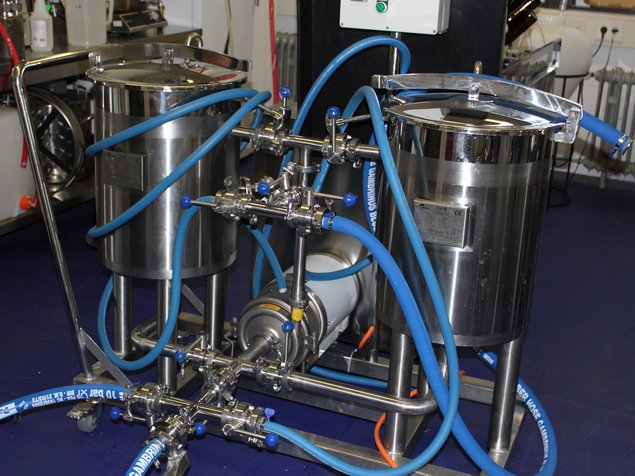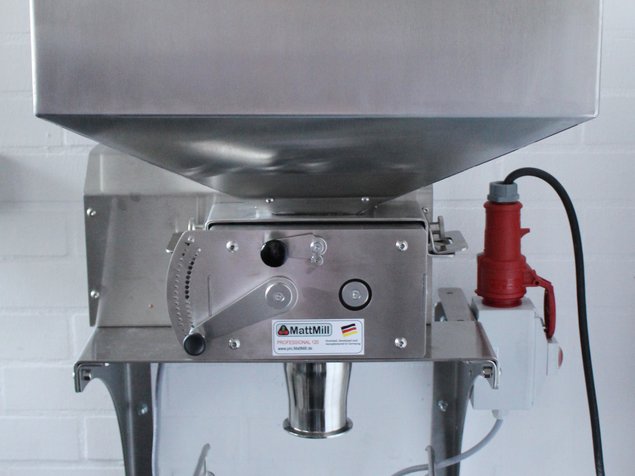Our brewery has food and customs approval, which means that certain conditions must be met. Our brewery has 2 bottle washing machines and a simple keg washing system. We have 2 cooling chambers that can be regulated between 0 and 10 °C. One of them is located in the so-called control warehouse, one outside. The finished beer is stored either in barrels or in bottles at 2 °C, a temperature at which a properly brewed beer can be stored for more than a year without any loss of quality.
The beer is bottled using a manual counter-pressure filling system, so it sees air for the first time after being poured into the fermentation tank when it is served.
We grind the malt in the malt store using two commercial malt mills with a throughput of 30 kg and 60 kg per hour respectively. For 150 liters of beer with an original gravity of between 11 and 12 °P, 30 - 35 kg of malt is needed, so milling is one of the fastest processes in brewing.
We analyze the finished beer with an Anton Paar Alex-500, with which we can indicate the alcohol content with an error of less than ± 0.2% by volume and the original gravity with less than ± 0.2 °P, provided the beer sample does not show any stray light.
We examine the sugar distribution using high-performance liquid chromatography (HPLC), with which we can determine the sugars from glucose to maltooctaose using the isocratic method. We determine sucrose and fructose enzymatically. With the so-called gradient elution, we can detect sugars up to 22 glucose units. We can quantify the relevant sugars glucose, fructose, sucrose, maltose and maltotriose; we can extrapolate the concentrations of maltotetraose and maltopentaose with a certain error.
We also use a device that allows us to analyze the most common beer spoilage organisms using the polymerase chain reaction. Pathogens cannot survive in a properly brewed and carbonated beer, but some lactic acid bacteria feel right at home in it. In this context, the good news is that lactic acid bacteria are harmless and can be found in many everyday foods. The bad news is that a sour Pilsner beer does take some getting used to. Therefore, if a beer is ever conspicuous during tasting, we can search for the most common beer spoilers using PCR.
Our brewery has a CIP system for cleaning our cylindrically-conical fermentation vessels. CIP stands for "Cleaning in Place" and is a standard procedure in the food industry. During fermentation, various processes take place that lead to deposits in the tanks. First of all, the yeast settles after fermentation is complete and various lees precipitate out with it. In addition to the yeast cells themselves, these include particles from the malt, proteins and various hop resins. The latter in particular can adhere firmly to the walls and are not easy to remove mechanically, especially in the tanks in large breweries with heights of up to 30 meters.
Our CIP system has a fresh water inlet, whereby this hose is sterilized in hot water before each cleaning process. One of the CIP system's two storage tanks contains alkaline cleaning agent, which we heat up to 55 °C, while the other contains acidic cleaning agent. First, the tank to be cleaned, which has a spray head at the head end, is rinsed 3 - 4 times with clear water until the wash water runs clear.
This is followed by cleaning with the alkaline solution for 30 minutes. The caustic solution removes residues of the fermentation carbonic acid and all acidic deposits. After a rinsing step with clear water, a 30-minute cleaning with the acidic cleaning agent takes place, which removes alkaline deposits.
After further rinsing steps with clear water, the gusset tap, the clear drain and the carbonation stone are removed and cleaned mechanically. After this approx. 90-minute cleaning process, the inside of the tank is sparkling clean and virtually germ-free. Before filling with the next wort, the tanks are sterilized with alcohol and successively with wet steam.

